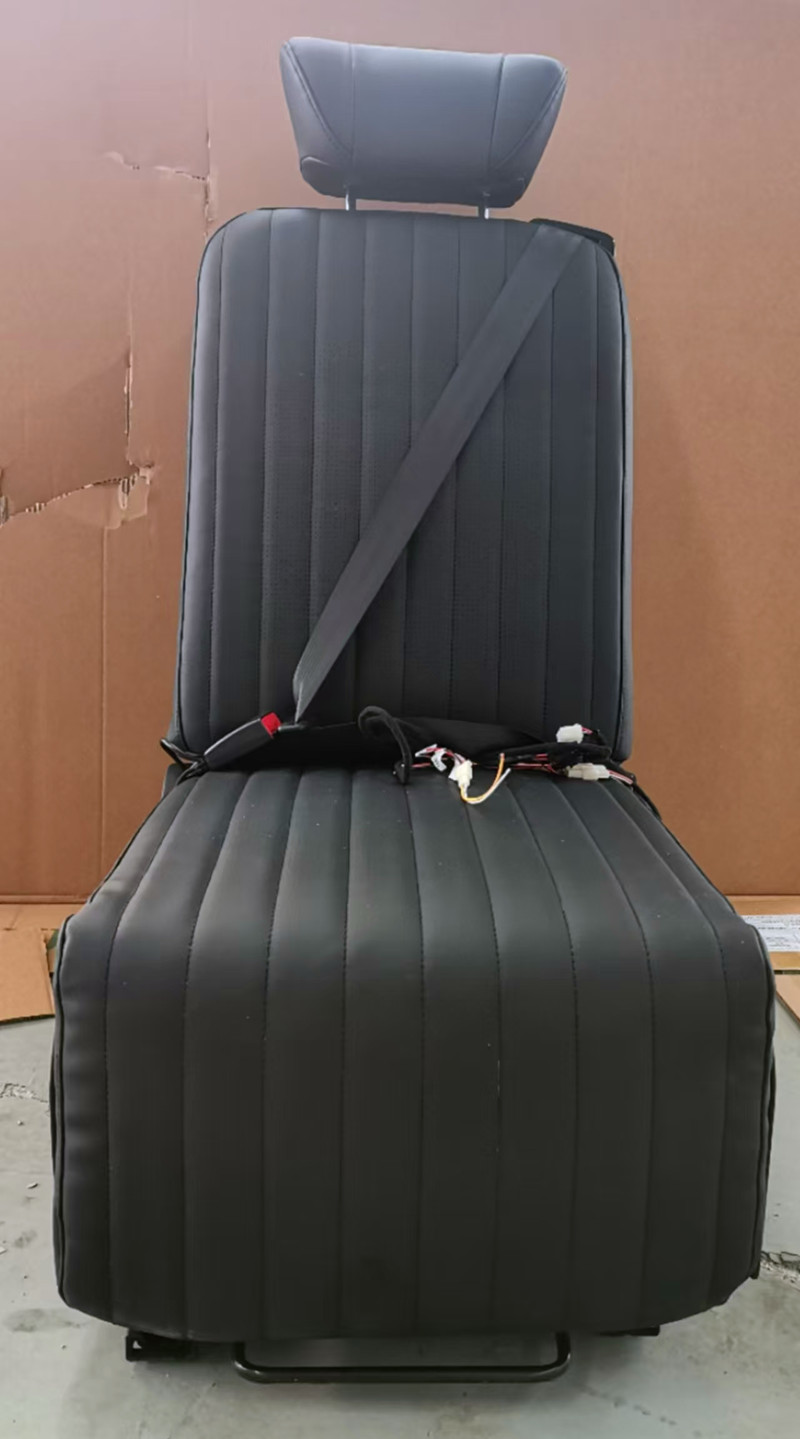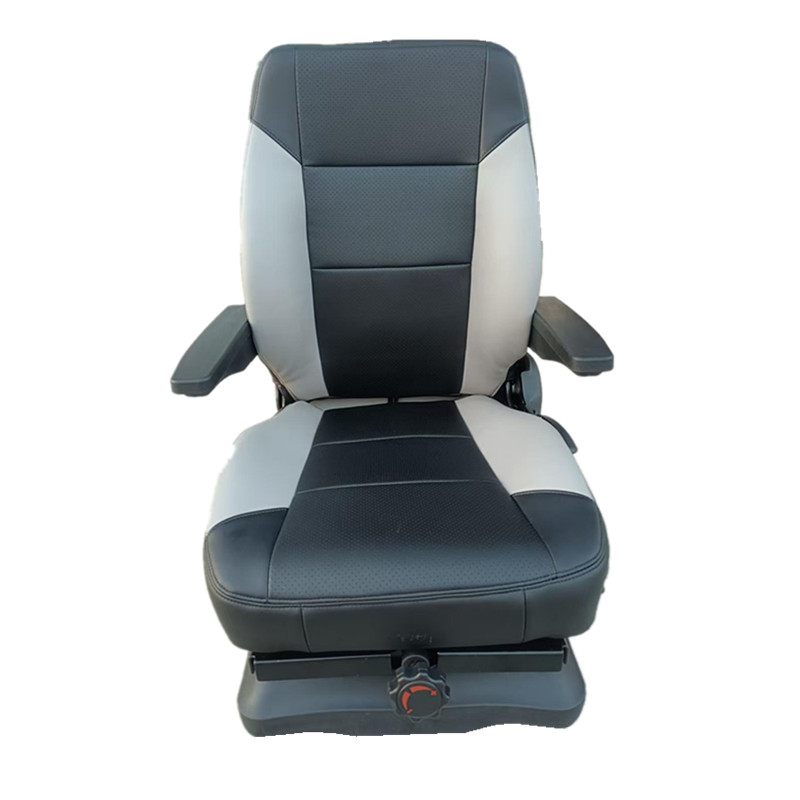MPV Seats
MPV Seats
I. Core Classification of MPV Seats (By Position and Function)
1. Front Seats (Driver/Passenger)
- Basic Configuration: Multi-directional power adjustment (backrest angle, seat height, forward/backward sliding), lumbar support (relieves fatigue during long drives). Some high-end models are equipped with extendable leg rests.
- Business Features: The passenger seat of some models can be folded or swiveled for easier access to the middle row; top-tier versions include heating, ventilation, and massage functions.
2. Middle Seats (Core Comfort Zone)
- Mainstream Type: Independent aviation seats (a signature configuration of MPVs), featuring an extra-large adjustment range (forward/backward sliding distance up to 50-80cm, backrest reclinable to 160°-180°). Some models come with 360° swivel function (supporting a "face-to-face seating mode" with the rear row).
- Luxury Configuration: Power leg rests, footrests, adjustable headrest wrap-around, seat memory (stores 2-3 sets of frequently used seating positions) in some models, USB/Type-C charging ports, and small tables (for business work or children’s meals).
3. Rear Seats (Flexible Expansion)
- Folding Function: Common "split-folding" (e.g., 6:4 ratio) or "full flat-folding". When folded, the trunk capacity can be expanded (some MPVs have a capacity exceeding 2000L after expansion, suitable for large luggage or camping gear).
- Practical Design: The rear seats of some models support forward/backward adjustment and slight backrest angle adjustment, or integrate child safety seat interfaces (ISOFIX) to meet the needs of family trips.
II. Key Functions and Materials of MPV Seats
1. Comfort Functions
- Temperature Control: Heating (with multi-level adjustment, suitable for winter), ventilation (blowing/suction modes to avoid stuffiness from prolonged sitting in summer). High-end models support zoned seat temperature control.
- Massage and Support: Mostly pneumatic massage (realized through airbag inflation/deflation), covering the waist, back, shoulders, and legs; some models add "seat vibration reminder" (e.g., linked with lane departure warning).
- Sound Insulation and Cushioning: The interior of seats mostly uses high-density sponge + spring layers, with sound-insulating fabric on the outer layer to reduce seat vibration and noise transmission during driving.
2. Material Selection (Comparison of Advantages and Disadvantages)
| Material Type | Advantages | Disadvantages | Applicable Scenarios |
|---|---|---|---|
| Genuine Leather (Top-Grain Cowhide) | Delicate touch, good breathability, wear-resistant and durable | High cost, requires regular maintenance (avoid exposure to sunlight/moisture) | High-end business MPVs (e.g., Buick GL8 Avenir, Toyota Alphard) |
| Faux Leather (PU/PVC) | Cost-effective, easy to clean (wipeable with a damp cloth), strong water resistance | Poor breathability (prone to sweating in summer), prone to cracking with long-term use | Mid-to-low-end MPVs or family cars (e.g., Wuling Victory, GAC Trumpchi M8 Entry Version) |
| Fabric | Excellent breathability, soft touch, low cost | Poor stain resistance (easily absorbs stains), low wear resistance | Entry-level MPVs or family users focusing on environmental protection |
| Eco-Friendly Materials (Recycled Fibers) | Low-carbon and environmentally friendly, breathability close to that of fabric | Limited color options, low market penetration | New energy MPVs (e.g., some Denza D9 models) |
III. Safety Design and Scenario Adaptation of MPV Seats
1. Core Safety Configurations
- Seat Frame: Made of high-strength steel/aluminum alloy to ensure the seat does not shift or deform in collisions, protecting passengers. Some models adopt a "collapsible design" for the frame to reduce collision impact.
- Seat Belt System: Independent middle-row seats are mostly equipped with 3-point seat belts (with pretensioners + load limiters); the position of the rear seat belt buckles is optimized (to prevent accidental triggering by children).
- Child-Friendly Design: In addition to ISOFIX interfaces, the middle-row seats of some models are equipped with "child seat anchor points" and "seat height adjustment" for easier installation/removal of child seats by parents.
2. Seat Adaptation Recommendations for Different Scenarios
- Business Reception: Prioritize middle-row aviation seats (with massage/ventilation), foldable rear seats (to expand trunk space for luggage), and genuine leather materials (to enhance grade), such as Buick GL8 and Mercedes-Benz V-Class.
- Multi-Child Families: Focus on rear ISOFIX interfaces, forward/backward adjustment of middle-row seats (for easier care of children), and fabric/faux leather materials (easy to clean), such as Toyota Sienna and Honda Odyssey.
- Long-Distance Self-Driving/Camping: Choose fully foldable rear seats (expandable into a "temporary bed"), middle-row seats with small tables (for meals/work), and seat ventilation (to avoid stuffiness during long trips).
IV. Purchase and Usage Tips
- Purchase Focus: Prioritize test-sitting the middle-row seats (to feel the support of leg rests/headrests), test the smoothness of seat adjustment functions, and check the flatness of the space after the rear seats are folded.
- Daily Maintenance: Clean genuine leather seats regularly with special care agents; avoid contact with sharp objects for faux leather/fabric seats; cover seats with seat covers when parked for a long time (to prevent sun exposure/dust accumulation).
- Modification Notes: When adding massage/ventilation functions later, choose formal manufacturers (to avoid damaging the safety structure of the seat frame); after modification, confirm that the seat belt and airbag linkage functions are normal






